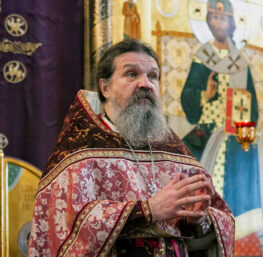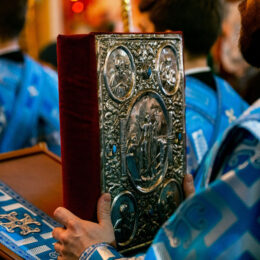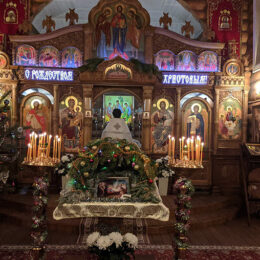January 9, 2005
Father Pat’s Pastoral Ponderings
Among the world’s natural boundaries, few have exercised greater political significance over the centuries than the Danube River. This second largest waterway of Europe (after the Volga), taking its rise in the Black Forest in southwest German, meanders in a mainly easterly direction toward the Black Sea some 1750 miles away, its volume constantly augmented by some 300 tributary streams. Thus it separated the classical Mediterranean lands of the lower Balkans from the more migratory peoples to the north. Indeed, the Roman Empire regarded the Danube as its northern border. Today it partially forms the national boundaries separating Hungary, the Czech Republic, Slovakia, Serbia, Bulgaria and Romania.
Besides separating them, however, the Danube has also served to unite various peoples of Europe. Once it becomes navigable at Ulm, this vital traffic artery links together such important cities as Regensburg (where one may still cross it on the oldest stone bridge in Europe), Passau, Linz, Vienna, Bratislava, Esztergom, Budapest, Belgrade, Galati and Izmail. Thus, the Danube’s place in history is secure and pervasive. As a traditional conduit for both commerce and culture, it stands second to no other river in the world.
Once the Danube passes through that narrow, mountainous gorge called the Iron Gate, its waters begin to spread out until, at Galati, it becomes hardly more than a marshy delta. In antiquity this delta region was known as Dobrogea, and, until the fall of Constantinople to the Turk in 1453, it was the site of a small but important outpost of Byzantine Christianity.
One of the most important Christians to arise in this region was a man named John Cassian. Born around 360, Cassian was educated in both Latin (the local language at that time) and Greek. Drawn to monastic life but finding no monasteries in the vicinity, young Cassian went to the Holy Land and became a monk in Bethlehem. Some time later he and another monk, Germanus, took to traveling around the eastern shores of the Mediterranean and visiting monastic centers in order to learn more about the monastic life. They spent extensive time doing this in Syria and more especially in Egypt, where they interviewed some of the more famous monks of that day, particularly the hermits. On two trips Cassian and Germanus seem to have spent about ten years in Egypt all together.
Cassian, evidently intending to visit his homeland in Dacia, stopped at Constantinople, the new capital of the Roman Empire, where John, an Antiochian monk and priest, had recently become archbishop. This was the John now known to history as Saint John Chrysostom. He ordained Cassian a deacon and joined him to his cathedral staff.
When political forces of the Byzantine court forced John Chrysostom into exile in Armenia in 404, a group of his friends, including four bishops, went to Rome to appeal his case to the pope. Cassian was part of that delegation. In Rome Cassian was ordained a priest, apparently never returning east again. Eventually he journeyed to the south of France where he founded two monasteries at Marseilles.
Before his death at Marseilles Cassian in 435 wrote the three works that make him a major literary figure of Latin culture: The Institutes, The Conferences, and The Treatise on the Incarnation. The last named was written against the heresy of Nestorius, who was condemned at the Ecumenical Council of Ephesus in 431.
Of these works, the more important are the Institutes and Conferences, in which Cassian distilled for Latin-speaking monks and nuns the inherited wisdom of the Egyptian monastic fathers. Indeed, it would be difficult to overestimate the importance of these two works in the spiritual thought of later Western history. In the following century these two works were recommended by name in the final chapter of The Rule of Saint Benedict, the major text of Western monasticism, and they became the favorite spiritual reading of many Western saints, such as Gregory the Great, Bernard of Clairvaux, Thomas Aquinas, and Teresa of Avila.
Cassian’s reputation has been even higher in Eastern Christianity, where he is known as St. John Cassian. When, in the 17th century, the Philokalia, a large collection of major ascetical texts, was assembled for the monastics of the Orthodox Church, Cassian’s Institutes and Conferences were the only two Latin works included.




This is a really small (and purely geographical) point, but the coastal state of Romania which includes the Danube delta is still called Dobrogea, the article appears to suggest that this is no longer the case.
Also, strictly speaking Galati (and the equally important Braila on the opposite, northern bank) is not yet in the delta. The river is extremely wide at that point but is still a single channel, not splitting into its distributaries until nearer the coast.